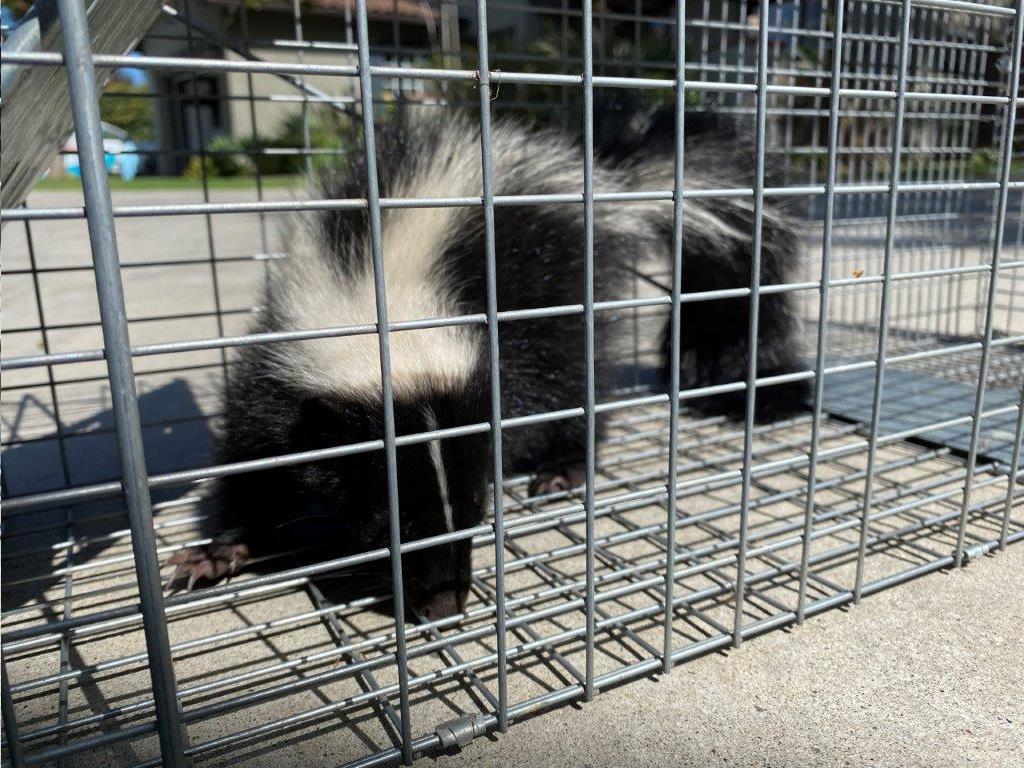
Skunks are famous for their stink spray; they use this as a defense mechanism against predators. However, more than their defense mechanism, they are also common carriers of rabies, and most people believe that all skunks are potential rabies carriers.
Skunks are antisocial and shy, so it is not common to see them during the day or fearlessly approaching humans or other animals. This causes people to believe that a skunk that is active by day is definitely rabid because skunk activity during this time is unusual and strange. While it is true that a rabid skunk exhibits strange behaviors that may include being active during the day, other factors can cause a skunk to be active at hours that seem odd for skunks.
Reasons Why a Skunk Will Be Active During the Day
· MOTHERHOOD: Most skunks that you see during the day are mothers in search of food. In the birthing season, the natural feeding and behavioral patterns of skunks change because only the mothers care for pups. Male skunks only mate with females and leave for the next mating season. The mother skunk has to stay in the burrow at night to protect her pups because the threat is fiercer at night and pups are defenseless in the first few weeks of birth.
The pups go out to hunt with their mother when they are about 5-6 weeks of age, after which the mother slowly returns to normal feeding patterns and behavior. It takes about eight weeks from birth for the mother skunk to return to her natural biology and sleep regularly.
· AN ORPHAN: A young skunk that roams around during the day may be an orphan that is foraging for survival. The skunk's mother is probably dead, or it got lost during a hunting session. The orphan keeps foraging and trying to survive until it gets help or starves to death.
· A LEARNED HABIT: Sometimes, a skunk learns to scavenge at certain periods of the day when there is less human activity and more food. A skunk easily adapts to its immediate environment and is an intelligent animal. It quickly learns what time is best to hunt and forage. This especially occurs in urban areas where the trash and garbage are less busy during the day, and homeowners are at work. The scent of food remnants from the garbage bags and cans draws out the skunk from its burrow and encourages it to be active during the daytime.
It is a misconception to think that all skunks that are active during the day are rabid. This myth has led to the killing of many skunks, which is bad for the ecosystem as skunks play a vital role in the food web. The myth that skunks are sensitive to light is another farce that leads homeowners to fix bulbs on their decks and patios to avoid skunk visits at night. However, the light attracts insects, which in turn attracts skunks to your home. This defeats the purpose of the lighting.
TIPS ON RABID SKUNK IDENTIFICATION
It is easy to identify a rabid skunk when it begins to manifest the clinical signs. These signs include disorientation, staggers, salivation and frothing from the mouth, aversion to water, aggressiveness, and attacks without provocation.
When you notice these signs, it is best to stay away from such skunk and notify wildlife removal and control centers in your state. Never try to engage or trap a skunk that is exhibiting these signs because you may further excite the skunk, and it may bite or scratch you.
Go back to the Bloomington wildlife removal home page.